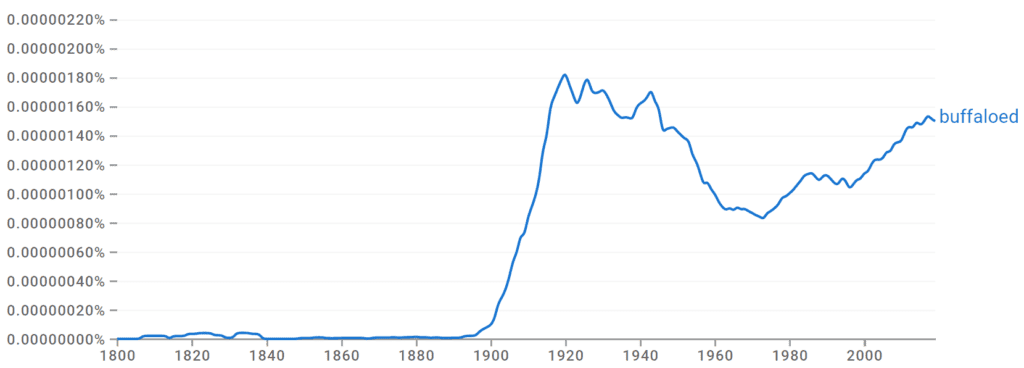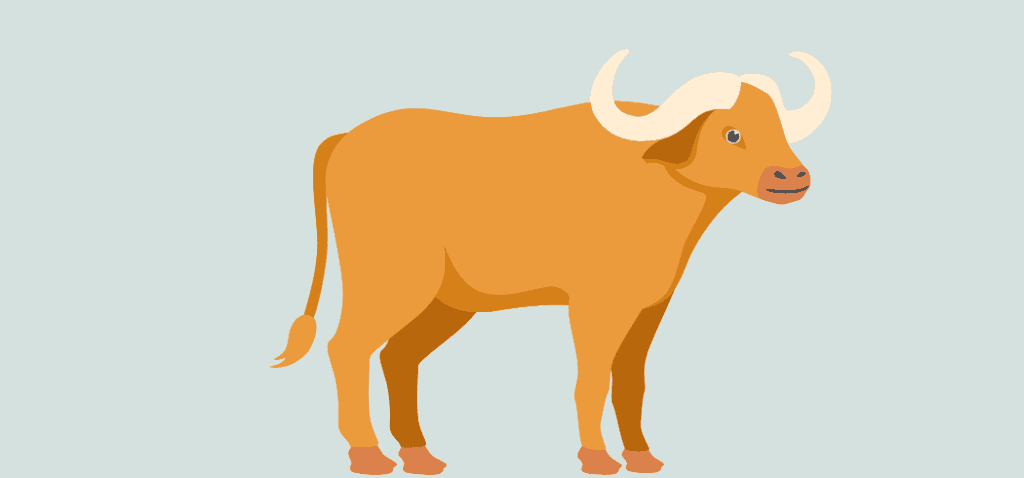Idioms are words and phrases used in a manner that provides a different meaning than if they were taken literally. This figurative use provides a fun and unique way to help bring a bit of life to your speech and can emphasize the point you are trying to make.
The only catch is that idioms often confuse anyone unaware of the analogy or metaphor created. For example, it doesn’t mean you’ve sicced your pet bison on them if you buffalo somebody. It simply means you’ve intimidated or deceived somebody through a display of authority.
Let’s look at the interesting and questionable history behind the term and how you can use it in your materials.
What Does It Mean to Buffalo Someone?
To have someone buffaloed means to have intimidated someone, asserted one’s superior authority or strength, or bullied someone.
It conjugates in a regular manner. For example, buffaloed, buffaloing, and buffaloes.
For example:
- The lawyer tried and failed to buffalo the key witness and threw his hands up in defeat when she stood her ground concerning how certain she was about what she saw.
- The marketing network was set up to create a monopoly, buffaloing smaller companies into selling to avoid bankruptcy.
It can also mean being confused or baffled by something. This use is not seen as often and is usually combined with the intimidation factor of the first definition. It means a person is confused due to the assertion or intimidation of another.
For example:
- He shook his head, buffaloed by the governor’s speech concerning the new tax laws.
- He was buffaloed by the final project instructions and wished the professor was more approachable so he could ask for clarification.
Where Did the Term Buffaloed Originate?
There is quite a bit of speculation about where the term buffaloed originated. It was formally recognized as American slang as early as the 1870s, with regular references mentioned multiplied times through the late 19th century and early 20th century.
I Hear America Talking: An Illustrated History of American Words and Phrases by Stuart Berg Flexner lists the following:
- TO BUFFALO SOMEONE – “1870s, to cheat or intimidate someone.”
Random House Historical Dictionary of American Slang, Volume 1, A-G by J.E. Lighter defines it as the following,
- BUFFALO – Verb. “Orig. West. a. to intimidate or frighten, esp. by means of mere bluff; to cow. For example, from 1891: “The boy’s a good boy, ‘n’ he shain’t be buffalered while I’m ’round’.”
The term made its first appearance in the Oxford English Dictionary in 1904 with the following example taken from the New York Evening Post on Oct 5, 1904:
- “All the rest (of the newspapers) were what we used to term in the Southwest ‘buffaloed‘ by the McKinley myth–“
Some ideas of how this term came to surround the behaviors of the American Bison (see Buffalo or Bison? below). When a bison herd defends itself, they circle up with young calves in the middle and make intimidating faints, horns out, towards the perceived threat. If they can hook or trample the threat, they will grind it into the ground using their massive head and horns.
When bison break and run, they are extremely quick and tough to catch. They are not intimidated like cattle and move away from threats but are more likely to go through or over any barriers in their way — be it animal, human, or stationary object.
Bison were hunted by the plains natives by running them down or running them over cliffs due to how difficult they were to catch.
All of these behaviors signal the strengths and intimidation the animals portray when defending their young or avoiding threats.
Buffalo or Bison?
What people think when they hear the name buffalo is the great shaggy ungulate of the American Great Plains. But what if I told you those animals aren’t at all?
A buffalo is actually a large bovid of Eurasia and Africa, called the water buffalo. Buffalo actually originates with the Greek word boubalos, meaning “antelope.” It was used as a reference to the huge wild ox that roamed northern Europe, which is now extinct.
The Late Latin form, būfalus, was used when the water buffalo was introduced to European domesticity. It became buffalo in Italian and búfalo in Portuguese and Spanish and was thus applied to the North American Bison species when Europeans arrived on the continent.
Many people are unaware of this difference and still refer to the American Bison as a buffalo despite the specific differences between the two species. And the term, to be buffaloed, remains unchanged. And, to be exact, a water buffalo herd would most likely behave similarly.
Let’s Review
Even though the term to buffalo is somewhat misnamed due to the great shaggy beast native to North America actually being called a bison, its meaning remained unchanged. If you buffalo someone, you are intimidating or asserting authority to get someone to act in a specific manner. It can also mean being confused or baffled, often due to intimidation.
Check out some others we covered:



